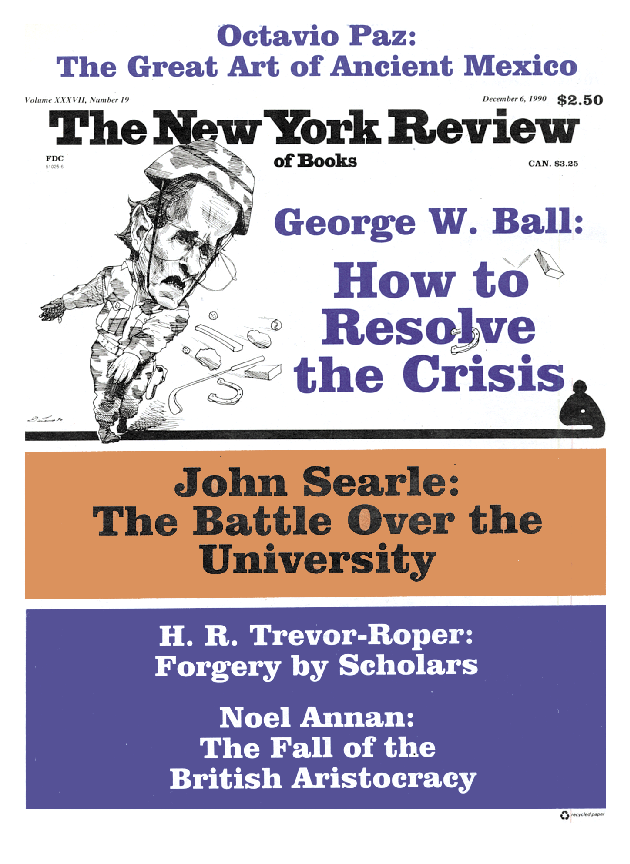In response to:
Neurology and the Soul from the November 22, 1990 issue
To the Editors:
In my article “Neurology and the Soul” [NYR, November 22], I unintentionally misquoted Charles Gray and Wolf Singer in the second paragraph on page 48. The sentence I quoted was inadvertently taken from an earlier, unpublished version of their paper. In the final, published version, Gray and Singer conclude that “Our results show that groups of adjacent cortical neurons, when activated appropriately, engage in cooperative interactions as postulated on theoretical grounds previously.” They then cite Gerald Edelman’s The Mindful Brain and a paper by J.C. Pearson, L.H. Finkel, and G.M. Edelman in Journal of the Neurosciences, Vol. 7, No. 12 (1987), pp. 4209–4223. I regret the error.
I must also note a small (but important) misprint (also on page 48) where I speak of there being “perhaps a million” neuronal groups or “mini-columns” in the brain. This should read “a hundred million.” In quantitative terms the brain has almost unlimited neuronal group power, more than enough for the longest, most active, most creative human lifetime: there is no neuronal reason why a human being cannot evolve, individuate, renew himself, mentally, right up to the end of his life (as great artists such as Shakespeare and Beethoven did).
I have also had the great pleasure, since completing my article, of meeting Michael Merzenich, of the University of California in San Francisco, in person—I had alluded to his work, very briefly, on page 49. Merzenich’s work, which involves direct mapping of the cerebral cortex with sixty or more microelectrodes in order to sample a single sensory field, gives a far richer picture of its activity than any study of a single neuronal unit can. Merzenich’s findings are not only in strong concurrence with Edelman’s group-selection theory, but cast much light on the understanding, and the treatment, of many previously puzzling neurological conditions. Merzenich has explored, among much else, the astonishingly rapid and radical alterations and “re-evolutions” of cortical mapping which may occur after cortical and peripheral injuries in monkeys, and the relevance of such findings to clinical medicine, as, for example, in the rehabilitation of patients after amputations, spinal injuries, and strokes. His work, in collaboration with the neurologist Frank Wilson, has clarified previously unintelligible disorders which sometimes affect musical performers, especially when they practice double trills, and excessively fast movements at the limit of human performance—conditions in which fingers may appear to “fuse,” and can no longer be felt separately, or moved independently of each other, or in which there may be a feeling that part of the hand is entirely missing.
These strange phenomena—previously called “hysterical”—become more intelligible in the light of Merzenich’s work, which shows how the “inner image,” the brain’s mapping of the hands, in such circumstances, may become distorted or confused. He has done important research as well in the very new field of sensory prostheses; he has especially studied the neuronal reorganization that may occur after implants of artificial cochleas, or inner car mechanisms, which can allow the rapid emergence of new perceptual categories and meanings. Patients become able within a few weeks to perceive intelligible speech, music, and other sounds, in what was, at first, for them an unintelligible noise—a stunning example of neural evolution in action. I regret that I did not present Merzenich’s work, and its implications, ‘more fully in my article.
Oliver Sacks
New York City
This Issue
December 6, 1990


